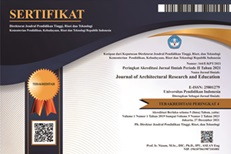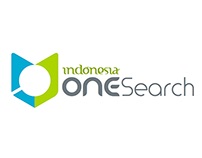DIGITAL ARCHITECTURE AS A MEANS OF NATURE-BASED THERAPY FOR DISABILITY COMMUNITIES
Abstract
People with disabilities tend to suffer from mental discomfort. They can lack self-confidence because they have physical limitations. Therapy is needed so that people with disabilities can be more confident in society and social life. Nowadays there are many conventional mental therapies, but they are still not optimal in providing healing, it is necessary to create a new idea or breakthrough that can make therapeutic solutions more effective and enjoyable. The presence of current IT technology can be used as a medicinal solution, one of which is by utilizing virtual reality or VR. VR is a natural reality or an artificial environment that can be designed in such a way that it becomes an environment that is needed according to the target. In VR, it is necessary to design an artificial environment or terrain to be able to provide therapeutic effects based on a calming and comfortable natural environment. Architecture can enter here in the realm of digital architecture, architects can be involved in designing the terrain so that the terrain space can become a room that is optimal for mental therapy. Several studies have shown that using VR technology and architecture (space design) for mental therapy purposes is proven to be effective and, when combined, have a better healing effect than conventional therapy. Based on this understanding, the future must consider VR and Architectural Design as a science in forming effective and efficient mental therapy.
Keywords
disabilities, therapy, virtual realty, architecture, design, terrain
Full Text:
PDFDOI: https://doi.org/10.17509/jare.v4i2.51736
Refbacks
- There are currently no refbacks.
Copyright (c) 2023 Journal of Architectural Research and Education

This work is licensed under a Creative Commons Attribution-NonCommercial-ShareAlike 4.0 International License.

This work is licensed under a Creative Commons Attribution-ShareAlike 4.0 International License.








